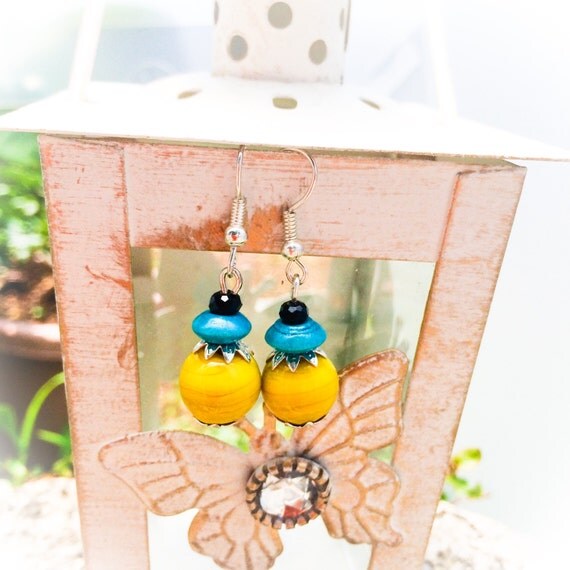Hi everyone!
Today I'll cover part #3 of my Jewelry Making Basics series, and this will be all about Jewery Making Tools, literally, the most vital entities in our jewelry making endeavours!
I hope you got to read my two earlier posts Jewelry Making Basics #1: All About Beads and Jewelry Making Basics #2: Jewelry Findings/Parts. If not, you can just click on these links and catch up on all that you missed! Also, don't forget to don't forget to Subscribe to this blog so you don't miss a post!
Ok, so let's dive in.
Tools, Tools, Tools
When I first started making jewelry, the very first tool I invested in was a pair of Round Nose Pliers. Although it lost its precision over the years, I still have it! It's rusted too, but I'll share the image anyway. Here we go..well used and well loved!
These pliers are rounded and tapered from thick to thin. What are they used for? Basically for bending a wire or a head pin into a loop. The tapering nose allows for creating loops of differing sizes (diameters) by holding them at the appropriate position along the length of the nose. (that sounds funny)
The other tool that I rely on heavily is this pair of Wire Nippers. Once my loop is created, I use it to cut off the extra wire or head pin.
If there are only two tools that you can afford or care to invest in, it's got to be these two! In fact, for the longest period of time, these were the only two tools I possessed!
Later, I invested in Flat Nose Pliers. What do I use them for? For straightening bent wires and for creating 90 degree angles. As you can see (below), mine are serrated on the inside and the serrations provide a little more grip on the wire. But they could also scratch the surface (especially if it is coated), so you need to be careful. I often use a piece of felt in between to prevent scratching. I bet there is a better tool out there to take care of this precise need but we will try to stay simple for now.
As you learn the ropes and get advanced in your skill, you will become cognizant of the fact that there are a TON of tools out there in the market made by various makers, each performing a very precise function in the jewely making process. Some boast grip, others tout the angles or precision. Here is a great resource by Fire Mountain Gems and Beads, explaining some of the commonly used jewelry making tools. That's about 20 different tools right there!
In this short video I cover three simple skills using three Jewelry Making Tools:
Where to Buy Jewelry Making Tools
If you are just testing the waters and not a 100% sure that you will stick to your jewelry making hobby, you could visit a dollar store or a ¥100 shop to pick up some starter tools, but I can tell you from experience that these items will not last too long (sadly). But if you are looking at jewelry making as a long term hobby, it might be a good idea to invest in some of the sturdier and good quality brands such as Wubbers or Lindstorm.
My favourite place for tools shopping in Tokyo would be Tokyu Hands. Bead and supplies stores such as Kiwa and Parts Club will also carry a handy collection of tools. But there are a ton of online options as well, including Amazon.
Another great option would be to purchase online from Etsy, the global handmade marketplace. Here is a list of some suppliers on Etsy that sell high quality brands internationally from the US, and UK. Many of them offer related jewelry making supplies as well, so definitely check them out in case you want to combine a shipping order and bring down the price. Here we go:
Ok, we're nearing the end. Next time, we are going to actually make a pair of dangling earrings using a basic set of Beads, Findings and Tools. Remember, we are trying to be able to make something simple like this pair of danglers.
So get your materials together and get ready for next time. That's it for now! Don't forget to Subscribe to this blog and keep coming back for more!
So get your materials together and get ready for next time. That's it for now! Don't forget to Subscribe to this blog and keep coming back for more!
[P.S. I would love to see your comments or any questions you might have. Will try to answer them to the best of my ability and knowledge! Ok, this is the last thing I'm going to say. Cheers! Have a great week!]
#etsy #etsyjapan #crafts #crafting #handmade #handmadeology #craftshows #sell #crafty #smallbusiness #branding #brand #sales #creative
#localbusiness #businesscard #jewellery #business
#how to






.JPG)

.JPG)


